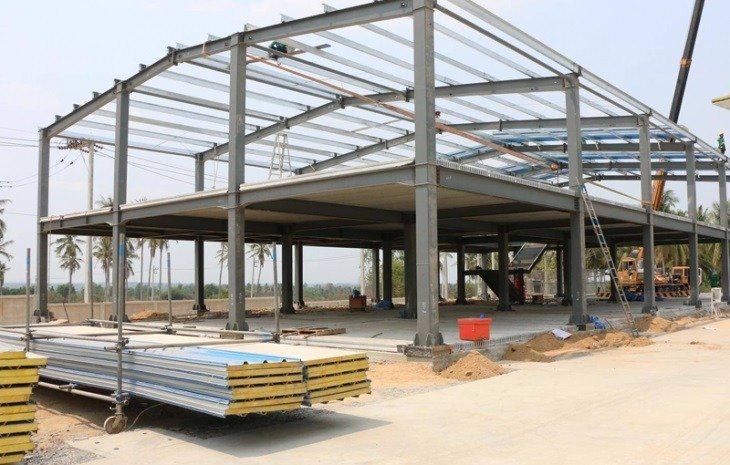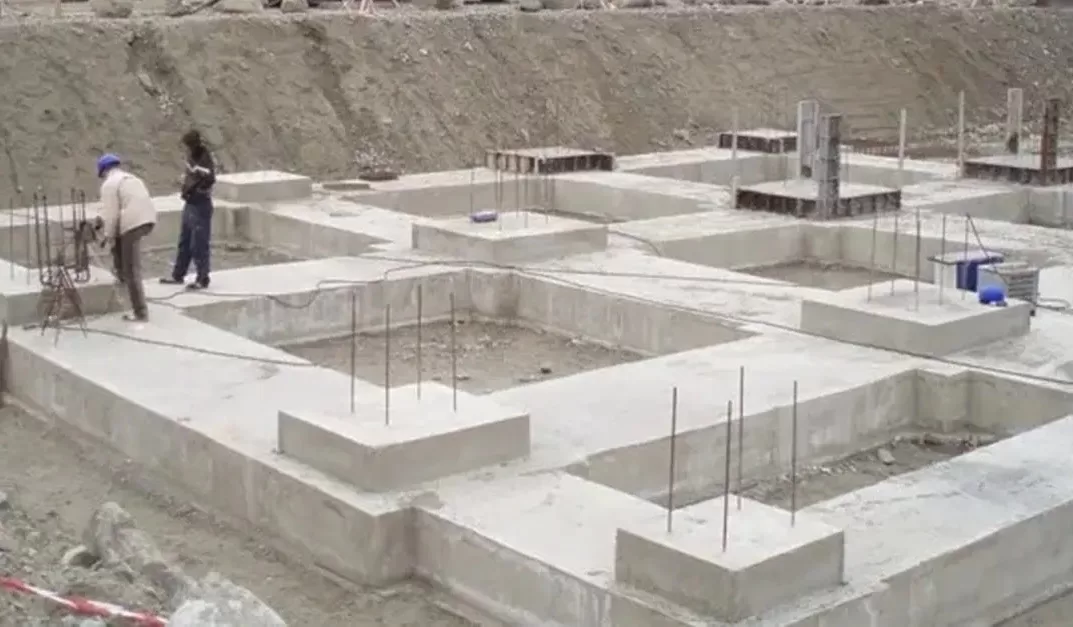Designing retaining walls exceeding a height of 5 meters as typical cantilever structures becomes uneconomical due to the substantial lateral forces, resulting in oversized sections that require significant concrete volume and extensive reinforcement. In response to these challenges, counterfort retaining walls offer a viable alternative, introducing triangular or trapezoidal stiffening elements known as counterforts.
Proportional Guidelines for Counterfort Walls
To ensure an economically sound design, counterfort spacing in a retaining wall should be confined to the range of 50-66.7% of the wall height. These guidelines align with principles applied to typical cantilever retaining walls, including considerations for base width, footing dimensions, and overall stability.
Stability Assessment of Counterfort Walls
The stability analysis of a counterfort retaining wall closely mirrors that of a typical cantilever wall. However, a distinctive feature is the integration of the counterfort weight as an integral part of the wall during calculations for overturning, sliding, and pressure resistances. This integration enhances stability while reducing the internal stresses within the structure.
Comprehensive Analysis of Counterfort Wall Behavior
In a counterfort retaining wall, the addition of counterforts transforms the structural behavior. The wall takes on the characteristics of a two-way slab fixed at the base and both sides, with the counterfort assuming the role of a cantilever. The heel, interconnected by the counterfort, becomes a continuous two-way slab, fixed at three ends and unsupported at one, while the toe retains its cantilever configuration.

Detailed Element Design for Counterfort Walls
Designing a counterfort retaining wall involves four key elements: the stem, the counterfort, the heel, and the toe.
- Stem Design:
- Treat the stem as a two-way fixed slab. Determine the maximum negative and positive moments in the wall.
- Utilize the equation M = 0.03kaγH³ or refer to charts for accurate results.
- Place horizontal reinforcing in the center of the wall, considering continuity across counterforts.
- Detail the wall, considering variations in pressure and reinforcement needs.
- Counterfort Design:
- Design counterforts as cantilever flanged beams, tapering from the top to near or at the edge of the heel.
- Distribute applied lateral soil pressure based on tributary area between counterforts.
- Determine internal forces using statics and adjust reinforcement as the counterfort tapers to the top.
- Heel Design:
- Design the heel as a longitudinal beam spanning between counterforts.
- Account for the net difference between the weight of the soil on the heel side, any surcharge, and the ultimate upward pressure.
- Provide reinforcing steel at the top between counterforts and at the bottom under the counterforts.
- Toe Design:
- Design the toe as a cantilever from the wall, similar to a conventional cantilever retaining wall.
- Consider the applied lateral soil pressure and provide appropriate reinforcement.
Sequential Steps in Counterfort Wall Design
- Initial Parameters:
- Establish wall height, geometry, and dimensions, including footing width and counterfort spacing.
- Stability Check:
- Verify wall stability against overturning, sliding, and pressure, accounting for the prorated weight of counterforts.
- Slab and Cantilever Design:
- Design the wall as a two-way slab fixed at the base, the toe as a cantilever, and the heel as a longitudinal beam.
- Counterfort Design:
- Design counterforts as tapered flanged cantilever beams, considering lateral soil pressure distribution.

Worked Example: Sizing and Reinforcement Quantities
Consider a practical scenario involving a 7.5m tall counterfort retaining wall with specified concrete and steel properties. The design process includes determining the appropriate wall dimensions and calculating the required quantities of reinforcing steel. This comprehensive approach ensures both structural stability and economic efficiency in the design of counterfort retaining walls.
Conclusion
The utilization of counterfort retaining walls provides an economically efficient alternative to typical cantilever structures for heights exceeding 5 meters. The incorporation of counterforts enhances stability, optimizes material usage, and redistributes lateral forces within the structure. Proportional guidelines, stability assessments, and detailed element designs contribute to a systematic and comprehensive approach, ensuring both structural integrity and economic viability. Counterfort retaining walls, exemplified in a worked example, stand as a strategic solution for achieving stability and efficiency in the design of taller retaining walls.





